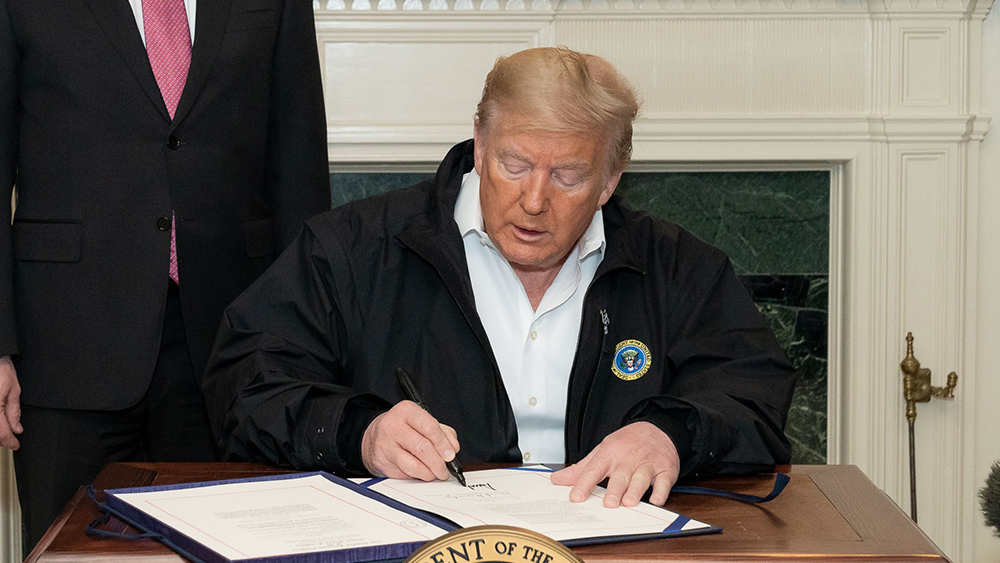Study: Doctors are PRESSURED to recommend opioids when asked much later in the day
09/04/2020 / By Divina Ramirez

Numerous factors influence the opioid crisis in healthcare, including the lack of holistic treatments for pain relief in mainstream medicine. But the authors of a recent article on opioid use found another startling factor that might be adding to the opioid crisis: the increasing rate of opioid prescribing.
Hannah Neprash, an assistant professor at the University of Minnesota and Michael Barnett, an internal medicine specialist practicing in multiple hospitals around Boston, found that physicians are more likely to prescribe opioids as their shift progresses and appointments fall behind schedule.
Their article, published in JAMA Network Open, also hinted at the possible factors behind this unsettling trend, including burnout, fatigue and time pressure. Further studies assessing these factors in detail might help shed light on the thought process that leads to prescribing opioids, the authors added.
Time and lateness affect clinical decision-making
To assess trends in opioid prescribing, Neprash and Barnett examined 678,319 appointments in 2017. The appointments involved 642,262 patients and 5,603 primary care physicians.
The patients had gone to their physicians to discuss painful conditions. Neprash and Barnett grouped these into five categories, namely headache, back pain, joint disease, other musculoskeletal conditions and other pain syndromes. None of them had been taking opioids or had been prescribed opioids in the last 12 months prior to their appointment.
The duo also grouped the appointments into sets of three and studied just a maximum of 21 appointments for each given day. They also gathered information regarding the timeliness of the appointments in 10-minute increments.
Upon assessing these data sets, Neprash and Barnett found that timing and lateness had a significant impact on a patient’s chances of being prescribed opioids. For instance, it appeared that physicians prescribed opioids just four percent of the time during their first three appointments.
But during their 19th to 21st appointments, physicians prescribed opioids 5.3 percent of the time. This corresponds to a 33 percent increase in the likelihood of opioid prescribing. The sudden jump also confirmed Neprash and Barnett’s hypothesis that appointment timing affected clinical decision-making.
The duo noted that although 5.3 percent doesn’t seem like a big number, this corresponds to 4,459 more opioid prescriptions that could have been avoided.
Neprash and Barnett found similar but smaller results after assessing the impact of lateness in clinical decision-making. It appeared that 4.4 percent of appointments running zero to nine minutes late resulted in an opioid prescription.
On the other hand, 5.2 percent of appointments that ran at least an hour late resulted in an opioid prescription. This corresponds to a 17 percent increase.
For comparison, the duo also assessed trends in the prescribing of nonsteroidal painkillers and referrals to physical therapy using the same time and lateness metrics. They found no similar or apparent patterns, thus suggesting that the patterns detailed earlier might be unique to opioid prescriptions.
Based on their results, Neprash and Barnett concluded that clinical decision-making for opioid prescribing is influenced by the timing and lateness of appointments.
These findings could help researchers understand the role of appointment timing and other possible factors influencing clinical decision-making, such as burnout and fatigue, in the opioid crisis, the authors noted. (Related: Could medical marijuana be a solution to the opioid epidemic?)
According to Michael Ellenbogen, an assistant professor of medicine at John Hopkins University‘s School of Medicine, Neprash and Barnett’s findings offer empirical evidence that physicians are prescribing opioids to patients complaining of pain as a sort of shortcut if pressed for time.
These findings, therefore, help shed light on this problem, said Ellenbogen. That being said, it did stop short of recommending that hospitals should make changes to their opioid programs. This might be something that future studies can look into, he added.
Read more articles about the health risks and potential consequences of opioid use at Medicine.news.
Sources include:
Tagged Under: future science, harmful medicine, Opioids, pain relief, Prescription drugs
RECENT NEWS & ARTICLES
PrescriptionDrugs.News is a fact-based public education website published by Prescription Drugs News Features, LLC.
All content copyright © 2018 by Prescription Drugs News Features, LLC.
Contact Us with Tips or Corrections
All trademarks, registered trademarks and servicemarks mentioned on this site are the property of their respective owners.

















